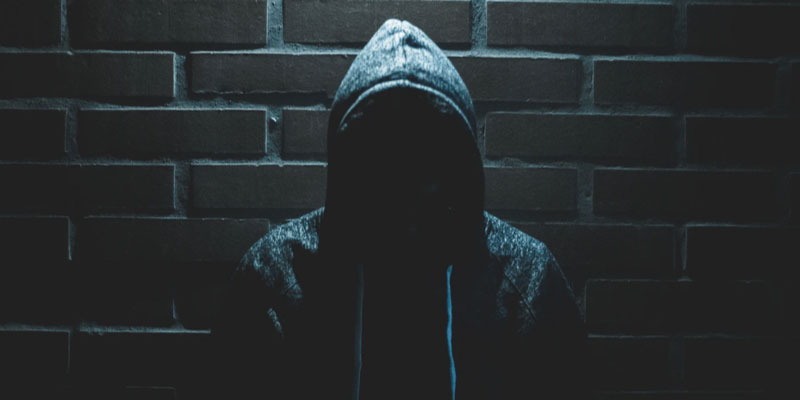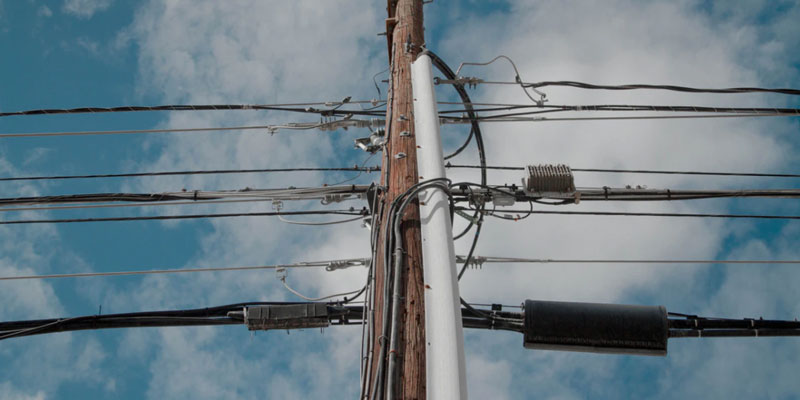It’s not alarming that different countries might come to different conclusions, but stories like this one paired with the zealous refusal to humor doubts about COVID vaccines in the United States make for a distrusting society:
Sweden has extended its pause of the Moderna COVID-19 vaccine for people aged 30 and younger due to heart-related side-effects, the public health agency announced on Oct. 21.
Note that officials are encouraging the Pfizer version for second doses. (Pfizer’s lower concentration of the active ingredient was one reason I chose that one.) The problem is we’re really not having an open and honest conversation on the topic in our country.
[Open full post]Given public statements by the University of Rhode Island’s new Australian president, Marc Parlange, I asked the university for documentation substantiating his assertion that URI is committed to “anti-racism.” In response, I received a document titled, “Anti-Black Racism: An Academic Affairs Action Agenda for Change.”
All in all, it’s about what one would expect. Calls for spending to pay people to spend time thinking about and advancing progressive identity politics, ensuring that it infiltrates every part of life on campus. Demands that every activity and lesson must spread the dogma. And so on.
In the very first paragraph, however, the document might raise eyebrows among those who’ve followed news about hate-crimes around the country: “Alarmingly violent acts against Asian and Asian Americans are also occurring with increasing frequency and there is a long history of oppression of Black, Latinx, and Indigenous communities.” The emphasis on anti-Asian crimes at the very start of a document on anti-Black racism is notable because of the common observation that many of the perpetrators of anti-Asian attacks have been Black. If true, that would suggest that all of this effort, expense, and public ire over “isms” is being spent in a misdirected way.
Keep in mind the current population make-up of the United States. People identified as “White alone” account for 76% of the population, while “Black or African American alone” account for 13% and “Asian alone” account for 6%. Complicating matters is the continued practice of treating ethnicity as distinct from race, even though the anti-racism industry lumps them together. For our purposes, note that 60% of the population is non-Hispanic White, while 19% are Hispanic of any race.
Now look at FBI hate crime data for 2020. Notably, White offenders committed anti-Asian hate crimes at less than their percentage of the population (52%), while Black offenders exceeded their per capita rate (22%). Looking only in California, where such attacks have been particularly noteworthy, the White percentage drops to 48% and Hispanic offenders account for almost as many attacks as non-Hispanic offenders (26% versus 27%). This is a much more complicated picture than the anti-racists acknowledge.
Naturally, this is the subject of heated debate and narrative-building. A report by the Virulent Hate Project at the University of Michigan sought to counteract the complicated picture by going through 4,337 news stories about hate crimes. The researchers found that 89% of anti-Asian offenders were, in fact, White, but the major caveat is that 82% of the stories they reviewed did not identify the race of the suspect. This is another area of distrust (and a frequent punchline) among non-progressives: If the story doesn’t identify the race of a person, then it probably didn’t fit the identity-politics narrative, which means (to put it mildly) we can assume a disproportionate number of the non-identified offenders were not White.
Along these lines, an Axios article on religion-based trends in the newly released FBI data also refers to more-recent news stories. In May of this year, for instance, the article notes that “New York City experienced almost as many anti-Semitic hate crimes during a three-week period in May than in the whole first quarter of the year.” Anybody who was paying attention knows that the offenders tended to be Middle Eastern (that is, Muslims). In that context, consider the FBI’s glossary definition of “White”:
A person having origins in any of the original peoples of Europe, the Middle East, or North Africa.
Oddly, in 2020, fully 77% of New York anti-Jewish hate crimes are marked with “Unknown” offenders, but we also have no way of knowing how many of the 11% who were White were Middle Eastern. Making matters worse, it’s not as if the FBI can’t or doesn’t distinguish along these lines when it wants to. One type of “bias” the agency tracks in its Race Ethnicity Ancestry category is “anti-Arab”; it also tracks “anti-Islamic” in the Religion category; yet offenders can only be “White.” Oddly, considering how closely their religion tracks with their ethnicity, Jews are only counted as a religion.
If you’re of a mind to really understand what’s going on with race in our country, the complications accumulate. One-fifth (21%) of anti-White hate crimes are perpetrated by White people, which is multiples higher than own-race attacks found for other groups, although still much lower than the 57% of anti-White crimes by Black offenders.
The nature of the crime matters, too. The top offense type against Blacks, Arabs, and Asians is “intimidation.” Against Whites, it’s “simple assault.” To be clear, the numbers are lower, especially when considered as a percentage of the population, but the nature of crimes is important. Something like “intimidation” is on its face more subjective than “assault,” raising the question of whether different races report “hate crimes” more readily (and whether authorities are willing the report them as such at different rates).
How much attention our mixing-pot society should devote to tracking “bias incidents” may be up for debate, but institutions of higher learning, which we used to expect to cultivate subtlety of thought, have left all doubts aside and are pushing divisive, harmful, and simplistic narratives from top to bottom. Founding broad, university-wide policies in ideological imperatives that make little pretense to a factual basis, they are convincing young Americans that they live in a society that does not actually exist.
Featured image by Luis Villasmil on Unsplash.
[Open full post]I like John Steigerwald’s idea (via Instapundit):
Instead of waiting for liberals to attack the Founders by attacking the statues that memorialize them, Republicans should be looking for places to put new ones, while, in the process, educating people about how Jefferson, who was born into slave ownership, helped to create the country that ended slavery.
Defending the honor of the Founders isn’t enough.
Pushing back against Critical Race Theory isn’t enough.
It’s time to re-find the Founders and celebrate them with no apologies. Start looking for places to build new statues, preferably in front of schools named after them.
Just one caveat: could we please make them aesthetically pleasing rather than conspicuously artsy?
[Open full post]While reading this article by Katabella Roberts for The Epoch Times, keep in mind that it has proven to be possible for the United States to be an energy exporter very quickly.
The world is facing a “real shortage of energy” that could lead to social unrest, according to Blackstone Inc. co-founder Stephen Schwarzman.
“We’re going to end up with a real shortage of energy,” he said at the fifth edition of the Future Investment Initiative in Riyadh, Saudi Arabia, on Tuesday, Bloomberg reported.
It’s difficult not to think that the underlying objective of many who hold power in the United States is actually to harm their country.
[Open full post]The featured image for this post is the power outage map for National Grid at 7:00 a.m. Power is out across the entire state.
It doesn’t have to be this way. Wires could be put underground, except that our government squanders as much money as it can so as to charge us additionally for basic services or force us to pay for basic services again on our own (as with generators and private schools). At labor unions’ behest, government also drives up the cost of infrastructure projects, making frequent updates unaffordable.
And then there’s radical environmentalism. Energy resources could be cultivated across the country. Under the last presidential administration, the United States was becoming an energy exporter. No more. Now we’re closing pipelines and driving up prices even higher. In contrast, cheap, reliable energy would free up the market for experimentation in both generation and storage technologies.
It doesn’t have to be this way. We just have to break through the spell that government officials, special interests, and the news media have put us under and run things reasonably again.
[Open full post]I read somewhere not long ago that the thing with alcohol isn’t so much that it lowers inhibitions as that it narrows one’s focus. Having fun in the moment, touching base with your high school friend at 4:00 in the morning, anger at that guy looking at you funny across the bar… these things become very important, and one winds up doing things that are embarrassing and harmful because the focus was inappropriate and the reaction therefore overblown.
That’s something like what Harvard University professor of medicine Martin Kulldorff is saying about COVID and children:
“I don’t think children should be vaccinated for COVID. I’m a huge fan of vaccinating children for measles, for mumps, for polio, for rotavirus, and many other diseases, that’s critical. But COVID is not a huge threat to children,” he said on EpochTV’s “American Thought Leaders” program. The full episode will be released at 7 p.m. New York time on Oct. 26 on EpochTV.
“They can be infected, just like they can get the common cold, but they’re not a big threat. They don’t die from this, except in very rare circumstances. So if you want to talk about protecting children or keeping children safe, I think we can talk about traffic accidents, for example, which they are really at some risk.
“And there are other things that we should make sure to keep children safe. But COVID is not a big risk factor for children.”
In Sweden, he says, the only restriction placed on children was that the families were asked to keep them home when they were sick. No masks, no distancing, and certainly no school closures. Of 1.8 million children, precisely zero died from the disease.
If we’re disrupting the childhoods of young Americans so much (and talking about giving them vaccines that are still untested for long-term effects) for the miniscule-to-them risk of the coronavirus, why aren’t we taking similar measures for all of the other comparable (or worse) risks they face every day?
Some of us react to such questions with fear that too many people won’t take them as rhetorical, but as suggesting that we must do more to deal with those other mild dangers. In that regard, we have to remember that, in addition to the direct harms of our reaction to COVID, it can also set a precedent, even a retroactive one for risks that we used to brush aside just a couple years ago.
Featured image by Rene Bernal on Unsplash.
[Open full post]This is such a great story, out of Louisiana:
These guys for President. All of them. pic.twitter.com/xfdLgI7Ayp
— Heath Mayo (@HeathMayo) October 23, 2021
A big part of what makes it powerful is the simple, plain honesty. Men simply have a way of being that can affect an atmosphere positively, especially if they’ve been conditioned by fatherhood (and, preferably, marriage). It doesn’t take away from women to acknowledge that.
Moreover, I’d bet that a follow-up story down the road would be able to find a positive effect on adult men in the community, as well, with this example being set so prominently.
[Open full post]Understandably, the president and CEO of the New England Cable and Telecommunications Association, Tim Wilkerson, is striving to get out ahead of rumors that the state government might give government-run Internet a try. Not only do such projects have a track record of failure, but also:
Rhode Island already is one of the best states in the nation for internet infrastructure and service, with almost 99% of Rhode Islanders having access to gigabit speeds. In fact, Rhode Island continuously ranks number one nationwide for broadband speeds.
Of course, Wilkerson is an industry advocate, so he’s not just calling for government to keep its hands off his clients. He wants the federal money burning a hole in officials’ pockets to be spent for their benefit:
With so many Rhode Islanders already having access to world class networks, our focus should be on breaking down barriers to internet adoption, including cost, language barriers, digital literacy and a host of other complex societal issues to achieve true broadband equity. This is the priority and where precious one-time federal dollars should be spent.
In other words, he wants his clients’ customers to be subsidized and primed to increase their usage. (Think of it as the subsidized college model.)
All such questions involving this so-called “once-in-a-generation infusion of federal taxpayer dollars” (which seem to be coming more rapidly than once a generation, recently) are much, much simpler than advocates make them out to be. If the state government has money that it can’t simply pass on to taxpayers by reducing the cost of services, it should go to basic, universal infrastructure.
The lives of Rhode Islanders would be improved hugely and for the long-term if the state government just did something simple: put our electrical and other wires underground and do so with wide pipes that could accommodate easy upgrades and changes to technology. I’m sure there are a number of such projects that wouldn’t be glorious, but that would tangibly improve the quality of life in the Ocean State.
Of course, these are baseline services, so politicians won’t be able to sell Rhode Islanders on some flashy new thing that they caught up (like the 195 land). They would also create risks for established players like National Grid and Cox Communications, because they would lower the cost of entry for competitors. Fewer downed wires would also mean fewer massive overtime waves for union workers.
These factors make anything so obvious and straightforward highly unlikely. When government and its satellites collect so much money in order to solve problems, they have incentive to ensure they’re never really solved. If one-time windfalls of cash enable officials to create new burdens and obligations for taxpayers, so much the better.
[Open full post]The Providence Journal has mildly more detail on the saga of the University of Rhode Island student currently watching his life destroyed because a sent a stupid and racist message to a celebrity football player, and it’s kind of chilling:
[Vice President of Student Affairs Kathy] Collins said the person in question is allowed to accept responsibility for his or her action. If not, a hearing is held, which can involve a panel of university members which will determine whether any policies were violated.
Sounds like a sort of French Revolution, verdict-before-trial process.
[Open full post]Stop everything! Boston construction companies aren’t hitting their equity targets!
Rules in Boston that set minimums for the participation of city residents, women, and people of color as workers on construction projects are not being met by the vast majority of projects.
City data obtained by GBH News shows that in the last five years, less than a third of the 150 major projects met racial equity goals. None met goals for women and three projects met goals for city residents.
People aren’t interchangeable. Some projects in some places at some times are just going to have imbalances for incidental reasons having zero to do with bias. Resources expended to correct inapplicable problems are wasted. (Although, politicians and diversity consultants obviously get something out of it.)
[Open full post]





